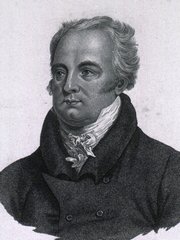| Cooper’s name survives in several eponymous anatomical structures and diseases he described, following are two of them:
• Cooper's ligaments of the breast: Connective tissue ligamentous strands between the pectoral fascia and the skin overlying the breast.
• Cooper's pectineal ligament: A thickening of the periostium on the superior aspect of the pubic bone, lateral to the pubic tubercle. This structure is a preferred site for staple positioning during a laparoscopic herniorrhaphy. When placing the staples, consideration should be placed on the potential presence of an anatomical vascular variation named the "Corona Mortis".
Although Cooper published a number of books and research papers, his seminal contribution to surgery was his two-volume "Treatise on Hernia". The first volume was published in 1795 and the second volume in 1807, with a revised second edition published in 1827.
Personal note: Although Sir Astley Cooper has been credited with the first description of the complex mammary suspensory ligaments (Cooper's ligaments), a 2016 paper by Brinkman and Hage (see Sources) contests this and gives Andreas Vesalius the honor of describing these structures nearly 300 years before Cooper! Dr. Miranda.
Sources:
1. "Sir Astley Paston Cooper." Singal, R. et al. Indian J Surg 73:1 (2011): 82-84.
2. "Sir Astley Paston Cooper, 1768-1841:the prince of surgery"Rawling, EG. Can Med Assoc J 99.5 (1968): 221.
3. "The life and work of Sir Astley Cooper" Brock, RC. Ann Royal Coll Surg England 44.1 (1969): 1-18
4. "Andreas Vesalius’ 500th Anniversary: First Description of the Mammary Suspensory Ligaments" Brinkman, RJ; Hage JJ. World J Surg (2016) 40:2144–2148
|



